Within the Reformed Christian tradition arose a small but influential movement in the mid/late 1960s known as Christian Reconstructionism. While based on Reformed theology it contains some significant and unique twists. Reconstructionism is marked by certain distinctives: the cultural mandate, sphere sovereignty (soevereiniteit in eigen kring), presuppositional apologetics, and the rejection of an otherworldly pietism. Among its key thinkers are: R.J. Rushdoony (considered the movement’s founder), Gary North (his son-in-law), James Jordan, Greg Bahnsen, and David Chilton. Reconstructionism’s influence extended beyond Christian circles into politics. With generous funding from Howard Ahmanson, Jr., Reconstructionism became popular in the 1980s during Ronald Reagan’s presidency. Both Ed McAteer’s Religious Roundtable conferences and the separate but friendly Moral Majority were heavily influence by Rushdoony Reconstructionism.
Key to Christian Reconstructionism is the concept of “cultural mandate” or “dominion mandate.” This is the conviction that Scripture gives the church a mandate to take dominion of this world socially and culturally (De Waay). Rushdoony in an interview with Jay Rogers stated:
Paul refers to the Church in Galatians 6:16 as the new Israel of God. This means that we have a duty. We have to occupy the whole world. The Great Commission is to make disciples of all nations. To bring them all into the fold together with all their peoples because Christ is the ordained King of all creation. We have a magnificent calling. I don’t believe God programmed us for defeat. (Emphasis added.)
This theological paradigm is based on the understanding that sin consists of autonomy (independence of God’s divine rule) and the belief that the subsequent disorder and sufferings that afflict us stem from this rejection of God’s will. Reconstructionists believe that the remedy is theonomy – the restoration of divine rule through the preaching and application of Scripture. This leads to the belief that all of Scripture is about reconstruction. Rushdoony in “The Meaning of Theocracy” wrote:
What we today fail to see, and must recapture, is the fact that the basic government is the self-government of covenant man; then the family is the central governing institution of Scripture. The school is a governmental agency, and so too is the church. Our vocation also governs us, and our society.
Christ as the Second Adam has “federal” headship of the new human race and Christians are called to apply Scripture not only to their own lives but to the world around them as well. They rely on sola scriptura as the basis for their moral code. This can be construed to mean a narrow exclusivist framework that allows for very little interaction with contemporary thought or non-Western cultures.
The Bible commands both personal devotion and cultural transformation according to biblical law. We should heartily abhor any “either-or” mentality about these things. We don’t need to abandon one for the other. True piety must include both. But we must be sure to get our standards for both from Scripture alone. (Chilton; emphasis added.)
R.J. Rushdoony wanted government to be in the hands of Christians as they were the ones who truly accepted the divine law:
The Christian theonomic society will only come about as each man governs himself under God and governs his particular sphere. And only so will we take back government from the state and put it in the hands of Christians. (Rogers; emphasis added.)
Critical to Reconstructionist or Dominion theology are three biblical passages: Genesis 1:26-28, Genesis 9:1-5, and Matthew 28:18-20. In their reading of Genesis 1 God gave man the mandate to exercise dominion not only over animals but also culture and politics; hence the term “cultural mandate.” In Genesis 9, God reaffirms the original mandate to Noah after the Flood. From the prohibition against the killing fellow humans is inferred the institution of the magistracy. Using the cultural mandate of Genesis 1, Christian Reconstructionists understand the Great Commission (Matthew 28:18-20) to be the basis for the universal Christian world order. De Waay notes:
Christian Reconstructionism consistently tie the dominion mandate to Matthew’s account of the Great Commission. In it they see the call of God for the church to “disciple” the “nations.” This they understand (along with the usual understanding of preaching the gospel) to be teaching God’s law (theonomy) to geo-political, social institutions for the purpose of Christianizing the world and creating a post-millennial, golden age before the bodily return of Jesus Christ.
Christian Reconstructionism has been labeled “Neo-Calvinism,” a form of Dutch Calvinism initiated by Abraham Kuyper. The beginning of its ideas can be traced to Kuyper’s 1898 Stone Lectures at Princeton Seminary where he spoke of the cultural mandate or “primordial sovereignty.” In Lecture 3, “Calvinism and Politics,” Kuyper asserted:
In order that the influence of Calvinism on our political development may be felt, it must be shown for what fundamental political conceptions Calvinism has opened the door, and how these political conceptions sprang from its root principle.
This dominating principle was not, soteriology, justification by faith, but, in the widest sense cosmologically, the Sovereignty of the Triune God over the whole Cosmos, in all its spheres and kingdoms, visible and invisible. A primordial Sovereignty which eradiates in mankind in a threefold deduced supremacy, viz., 1. The Sovereignty in the State; 2. The Sovereignty in Society; and 3. The Sovereignty in the Church. (Emphasis added.)
The notion of a cultural mandate is fairly new to Reformed theology even though early Reformers like John Calvin were concerned not just with the reform of the church but with reforming civil society as well (See Calvin’s Institutes 4.20). What Neo-Calvinism has done is to elevate the political, governmental and especially legal element to an unprecedented degree.
The appeal of Reconstructionist theology can be found in its comprehensive worldview. It unites into one package: the fundamental structure of the natural order (to be under human rule), man’s fundamental identity in relation to God (to rule on behalf of God), the Christian’s fundamental identity in relation to others (to reinstate God’s rule through the preaching of the divine word), and a framework for understanding the grand sweep of human history (Christian dominion will hasten the return of Christ). Here we see the fusion of the doctrines of creation, salvation, ecclesiology, and eschatology into one coherent (totalizing) whole. This grand vision provided Kuyper a powerful motivating force for living and for changing the world.
One desire has been the ruling passion of my life. . . . . It is this: That in spite of all worldly opposition, God’s holy ordinances shall be established again in the home, in the school and in the State for the good of the people; to carve as it were into the conscience of the nation the ordinances of the Lord, to which the Bible and Creation bear witness, until the nation pays homage again to God. (In Naugle)
Dominionist Christians hold to a post-millennial eschatology which teaches that the Second Coming will not take place until most of the nations are discipled. This does not mean every single nation or person becomes openly Christian; yet the Lordship of Christ will be the dominant influence over the nations as a whole. This is based on a peculiar reading of the Great Commission (Matthew 28:19-20) injunction to “disciple all nations.” Implied here is Dominionist Christians ruling over all of human society at Christ’s return. Understanding this expansive worldview can help one understand the eagerness with which Dominionists seek to bring present day society under “Christ’s rule.”
What Does Genesis 1 Teach Us?
Because Genesis 1:26-28 is foundational for Reconstructionist theology close attention will be given to the Reconstructionist reading of this passage. R.J. Rushdoony’s seminal The Institutes of Biblical Law (1973), and Greg Bahnsen’s Theonomy In Christian Ethics (1977), Gary North’s The Dominion Covenant: Genesis (1985) are considered the foundational books for Reconstructionist theology. But upon closer inspection one finds little or no basis for their foundational doctrine of dominion. For example in North’s book one finds that Genesis 1:26 is mentioned only three times in this lengthy book (over 500 pages). North asserts that man’s identity is grounded in his covenant relationship with God and that Genesis 1:26-28 defines the basis for man’s relationship with God.
Man is actually defined by God in terms of this dominion covenant, or what is sometimes called the cultural mandate. This covenant governs all four God-mandated human governments: individual, family, church, and civil. (North p. ix)
But what is especially striking is the absence of biblical exegesis that shows how Genesis 1 supports the notion of the dominion covenant and the cultural mandate. This is a criticism made by a number of critics. Among them is Bob De Waay who wrote “The Dominion Mandate and the Christian Reconstruction Movement.” Reconstructionist theology is popular even in Southeast Asia where it also met with criticism. Sze Zeng noted that basing the cultural mandate on Genesis 1 is problematic being based on eisegesis. He notes:
Kong Hee is reading into the text. Genesis 1 – 2 has nothing to do with the broad mandate to cultivate ‘culture’ in the world. These passages concern the specific agricultural work of the primitive family for their sustenance and not about “taking the raw material God has given to man, and creatively nurturing it to its fullest potential,” as Kong Hee stated. (Emphasis added.)
If the Reconstructionist reading of Genesis 1:26-28 is in error then we need to ask what the correct reading would be. For that we look at three sources: (1) the magisterial Reformers, Martin Luther and John Calvin; (2) the early Church Fathers, John Chrysostom, Gregory of Nyssa, and Augustine of Hippo; and (3) recent biblical scholarship.
In his commentary on Genesis 1 Martin Luther found that God giving “dominion” to Adam and Eve referred to authority over animals.
And in the next place we must view the matter in an absolute sense, that all animals, nay, the earth itself with all created living things and all generated from them, are subjected to the dominion of Adam, whom God by his vocal and expressed command constituted king over the whole animal creation (p. 121).
John Calvin in his commentary on Genesis similarly found dominion to refer to human authority over animals:
And let them have dominion. Here he commemorates that part of dignity with which he decreed to honor man, namely, that he should have authority over all living creatures. He appointed man, it is true, lord of the world; but he expressly subjects the animals to him, because they having an inclination or instinct of their own, seem to be less under authority from without. (Emphasis added.)
When we look at the early Church Fathers we find a similar emphasis in their exposition of Genesis 1. John Chrysostom, considered one of Christianity’s greatest preachers, in his homilies on Genesis noted:
What in fact does the text go on to say? “Let them have control of the fish of the sea, the birds of heaven, and all the reptiles creeping on the earth.’” So “image” refers to the matter of control, not anything else, in other words, God created the human being as having control of everything on earth, and nothing on earth is greater than the human being, under whose authority everything falls. (John Chrysostom p. 110)
John Chrysostom goes on to note that just as there are wild animals in the natural world that need to be tamed so likewise in our souls are wild brutish thoughts that need come under the rule of reason (pp. 120-121). Gregory of Nyssa, one of the Cappadocian Fathers, in “On the Making of Man” noted that mankind’s weaknesses in comparison to other creatures is more than made up for by God bestowing on him “dominion over the subject creatures.” (Emphasis added.)
With reference to modern scholarship we find a similar interpretation of “dominion” in Genesis 1:26. Keil and Delitzsch’s widely known Old Testament commentary series affirm the understanding that man was given dominion over the animal kingdom and the earth (Vol. 1 p. 64). Thus, from the standpoint of biblical studies and historical hermeneutics it becomes clear that the Reconstructionists are following an innovative interpretation of Genesis 1 that is at variance with their own Protestant tradition and that of the early Church as well.
One of the biggest problems that must be addressed by Reconstructionist theologians is the fact that the so-called dominion mandate given prior to the Fall may not necessarily apply to the human condition after the Fall. De Waay notes:
It is remarkable how much emphasis is placed on Genesis 1:26-28 as being a mandate to rule over cultures and human institutions in a fallen world when at the time that Adam was given this mandate, no such cultures existed and the world was not fallen. The text says nothing about cultures or subjugating other people. (Italics added.)
Adam’s pre-Fall dominion has been understood in terms of primal harmony between man and the animal under him. Martin Luther noted:
For as Adam and Eve acknowledged God to be Lord, so afterwards they themselves held dominion over all creatures in the air, on the earth and in the sea. Who can express in words the excellency and majesty of this “dominion?” For my belief is that Adam could by one word command the lion as we command a favorite dog. He possessed a freedom of will and pleasure to cultivate the earth, that it might bring forth whatever he wished (p. 118). Source (Emphasis added.)
Gabe Martini, an Orthodox blogger, in a FaceBook discussion on dominion theology underscored how dominion referred to the primordial harmony between man and animals that has been lost in the Fall:
When it comes to our rule or dominion over creation, this is seen as a sign of God’s love for humanity (in Chrysostom, for example), but also as something LOST by the advent of sin. In other words, the dominion “mandate” was a pre-Fall (if you will) command, something that is no longer possible in our present or (un-)natural state. This is why you see animals following around extreme ascetics where that likeness of Christ and the dominion mandate is actually present. The reason hurricanes, floods, tornadoes, and tsunamis wreak havoc on the earth is this corruption and death brought on in Adam. The first Mother of Life (“Zoe” in the Septuagint) became tragically a mother of death. But the true Mother of Life (Mary) and the true Man or Adam (Jesus Christ) reversed that curse, paving the way for life—even life everlasting. So when a wild animal attacks a person, this is not an example of our need to exercise dominion over that creature or punish it; it’s a reminder that we failed to live up to our original mandate, and that only through the mysteries of the Faith in Christ can a reconciliation be found. (Emphasis added.)
Another significant challenge for the Reconstructionists is the fact that their belief that Genesis 1:26 has implications for the political relations has been repudiated. The late Fuller Theological Seminary missiologist, Arthur Glasser, criticized the notion of humans subjugating humans. He cited Kirk(?) who wrote: “Man has no right whatsoever to subjugate his fellow man. Only God is man’s legitimate Sovereign” (Kingdom and Mission p. 33).
Probably the strongest and most direct refutation of the Dominionist reading of Genesis 1:26 is to be found in Augustine’s City of God.
He did not intend that His rational creature, who was made in His image, should have dominion over anything but the irrational creation,— not man over man, but man over the beasts. (City of God 19.15, emphasis added)
If Augustine of Hippo, considered the preeminent theologian of Western Christianity, repudiates the Dominionist reading of Genesis 1:26, then those who hold to Reconstructionist theology should take heed and reevaluate their position lest they end up belonging to an eccentric sectarian group far from the mainstream.
In conclusion, what the Dominionists or Reconstructionists have done is read into Genesis 1:26 their belief that men are to rule over other men, and implicitly that Christians (Calvinists) are to rule over other men (other Christians and non-Christians). This position can sound plausible until one sits down for a minute, take a deep breath, then read the passage calmly paying attention to what it says and it does not say. Genesis 1:26 teaches that humanity is to rule over (1) the fish of the sea, (2) the birds of the air, and (3) all the creatures on the ground. Nowhere does verse 26 teach the idea of men ruling over other men! When one examines the way Genesis 1 has been interpreted by the early Church Fathers and later by the Protestant Reformers, we find an innovative reading of Genesis 1 that rests on shaky exegesis. The command in Genesis 2:15 to “dress” and “keep” the Garden of Eden, that is, to cultivate and adorn the Garden of God can be understood to refer to man as a farmer living in harmony with nature.
Sojourners in the World
The foregoing critique of Reconstructionist theology does not mean that Scripture is silent on God’s sovereignty over creation and human society. There are a number of key passages that speak to this issue although they may not be the ones that Reconstructionists give much attention to. One of the best overview of God’s sovereignty can be found in Paul’s speech to the Athenians in Acts 17.
From one man he made every nation of men, that they should inhabit the whole earth; and he determined the times set for them and the exact places where they should live. God did this so that men would seek him and perhaps reach out for him and find him, though he is not far from each one of us. “For in him we live and move and have our being.” As some of your own poets have said, “We are his offspring.” (Acts 17:26-28, NIV)
In his speech Paul described God’s providential care over all of humanity. Nowhere in his speech do we find any indication of Reconstructionism’s dominion mandate!
Another key passage is Jeremiah 29:4-7 in which God instructs the Jews living in Babylon to “seek the peace and prosperity” of their new home. He does not instruct the Jews to take the reins of power in Babylon but to serve their pagan masters to the best of their ability. This is because God is the Ruler of Jews and non-Jews. His sovereignty extends beyond the borders of Israel into all the world including the so-called unconverted barbarians. Paradoxically, God is sovereign even when pagan kings rule over his elect. Dominionist theology doesn’t hold up well to situations of ambiguity and pluralism.
The Epistle of Diognetus, an early writing included among the Apostolic Fathers, described Christians as living among men, sharing the “local customs” and language, and being different only with respect to their way life based on Christ’s love. “They pass their time upon the earth, but they have their citizenship in heaven. They obey the appointed laws, and they surpass the laws in their own lives. They love all men and are persecuted by all men. They are unknown and they are condemned. They are put to death and they gain life” (Chapter 5:10-12). This does not sound like Dominionist or Reconstructionist theology at all! One has to wonder then whether the Dominionist Christians are of the same spirit as the Apostolic Fathers, the first generation Christians who were taught by the very Apostles of Christ.
When we look at the early Christians we find an absence of a clearly defined political theory. The early Church entered the world as an illegal sect at times persecuted by the Roman government and at times living at peace with society. With Emperor Constantine’s Edict of Milan in AD 313 Christianity became a public religion. Then in time it became the official religion of the Roman Empire under Emperor Theodosius. While Orthodoxy holds symphonia – church and state complementing each other – as an ideal, it is far from a dogma or political platform like that advocated by the Reconstructionists.
Another major exegetical blind spot in Reconstructionist theology is the silence with respect to the Davidic covenant. This grant covenant encompassed the earlier Abrahamic and Mosaic covenants (2 Samuel 7, 1 Chronicles 17:11-14) and established a prototype for Christ’s kingship. The Davidic Covenant is foundational for understanding the New Covenant founded by Jesus Christ. One has to ask why has the Davidic Covenant been all but ignored by the Reconstructionist Christians?
In contrast, Reconstructionist theology has some specific ideas about politics. Mark Rushdoony identified Christian Reconstructionism as being (1) anti-statist, (2) favoring small, limited government, and (3) shrinking national and state governments in order to expand the influence of the family, church, and local community. It appears that Reconstructionist theology is wedded to a particular kind of political structure with very little wiggle room for alternative political views. Despite the Reconstructionism’s anti-statist stance and its Libertarian tendencies one has to wonder what a Reconstructionist polity would look like. Would it be similar to Puritan New England which expelled Roger Williams and Anne Hutchinson for their non-Calvinist beliefs? Would they support regicide like Oliver Cromwell did in the Puritan Revolution? Would they support capital punishment for a heretic like Servetus in Calvin’s Geneva? In an 1988 interview with Bill Moyers Rushdoony admitted that the Reconstructionist theology would lead to the support for capital punishment for violations of biblical law. Many Christians would find such a polity unpleasant and repulsive.
 Reading Reconstructionist literature one gets the impression that dominion is given emphasis and the theme of the Suffering Servant is downplayed or muted. If the Church is to “reign” (whatever that word should imply) on earth then it seems most likely to happen by suffering, serving, dying, and martyrdom, not through the exercise of social-political authority. The “suffering-servant” is a far more common Christological theme for “rule” in both Scripture and the early church fathers.
Reading Reconstructionist literature one gets the impression that dominion is given emphasis and the theme of the Suffering Servant is downplayed or muted. If the Church is to “reign” (whatever that word should imply) on earth then it seems most likely to happen by suffering, serving, dying, and martyrdom, not through the exercise of social-political authority. The “suffering-servant” is a far more common Christological theme for “rule” in both Scripture and the early church fathers.
Being an Orthodox Christian does not entail the rejection of the idea of a cultural mandate. Rather we understand the cultural mandate in the context of the Eucharist, not in theocratic rule. In Revelation we read about the New Jerusalem: “The glory and honor of the nations will be brought into it.” The glory and honor of the nations is a way of speaking of the culture and the arts of the Gentiles. This prophecy finds its fulfillment in the Divine Liturgy. In the Eucharist we take from the natural order wheat and grapes and transform them by means of technology and cultural arts into bread and wine. We bring them into the Church and God blesses the bread and the wine transforming them into the body and blood of Christ in the Eucharist. Church architecture, the icons, the hymnography, and the transformed lives of the people present at the Liturgy that we find the fulfillment of the Cultural Mandate. And it is in the Church in the Liturgy, the Sacraments, the ascetic disciplines and the life of repentance that men are learning to rule over their passions and where the Dominion Mandate finds its fulfillment.
With respect to ecclesiology most Reconstructionist Christians from the mid 1960s to the mid 1980s were considered low church Calvinists who adhered to a strict and austere regulative principle approach to worship. However, as they began to read Orthodox, Anglican, and Roman Catholic writings their theology began to morph becoming the Federal Vision movement. (One influential work has been Alexander Schmemann’s For the Life of the World.) Today Rushdoony and other early Reconstructionist are criticized as being almost Anabaptist in their ecclesiology. The Federal Vision movement stimulated among Reformed Christians interest in the early Church, the Church Fathers, liturgical worship, and the Eucharist. In exposing people to the early Church the Federal Vision movement exposed its followers to the Orthodox Church with the unexpected consequence of some of its members “crossing the Bosphorus.”
Robert Arakaki
Sources
Augustine of Hippo. City of God.
John Calvin. Commentary on Genesis.
David Chilton. “Piety and Christian Reconstruction.”
Bob De Waay. “The Dominion Mandate and the Christian Reconstruction Movement.” Critical Issues Commentary.
Arthur F. Glasser. N.D. “Kingdom and Mission: A Biblical Study of the Kingdom of God and the Worldwide Mission of His People.” Class reader for MT 520.
Gregory of Nyssa. “On the Making of Man.”(Chapter VII)
Michael A. Grisanti. 1999. “The Davidic Covenant.” The Masters Seminary Journal (Fall 1999), pp. 233-250.
Abraham Kuyper. “Third Lecture – Calvinism and Politics.” Stone Lectures.
Martin Luther. Luther on Creation: A Critical and Devotional Commentary on Genesis. John Nicholas Lenker, ed.
Bill Moyer. Interview with R.J. Rushdoony. Excerpts found in “Quoting Rushdoony Just Seems Like a Really Bad Idea” by Libby Anne, Love, Joy, Feminism.
David Naugle. “Introduction to Kuyper’s Thought.”
Gary North. 1982. The Dominion Covenant: Genesis: An Economic Commentary on the Bible. Volume I. Revised 1987. Institute for Christian Economics: Tyler, Texas.
Jay Rogers. “An Interview with R.J. Rushdoony” in Forerunner.com.
Mark Rushdoony. 2005. “The Continuing Legacy of Christian Reconstruction.” Chalcedon Foundation.
R.J. Rushdoony. “The Meaning of Theocracy.” Chalcedon Foundation.
Sze Zeng. 2010. “Critique on Kong Hee’s Genesis 1-2 ‘Cultural Mandate.’”
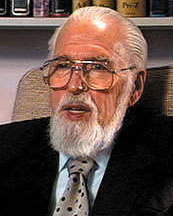
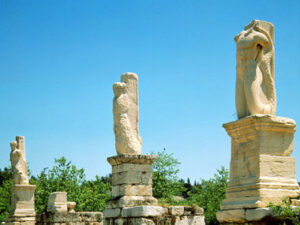
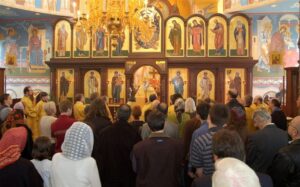


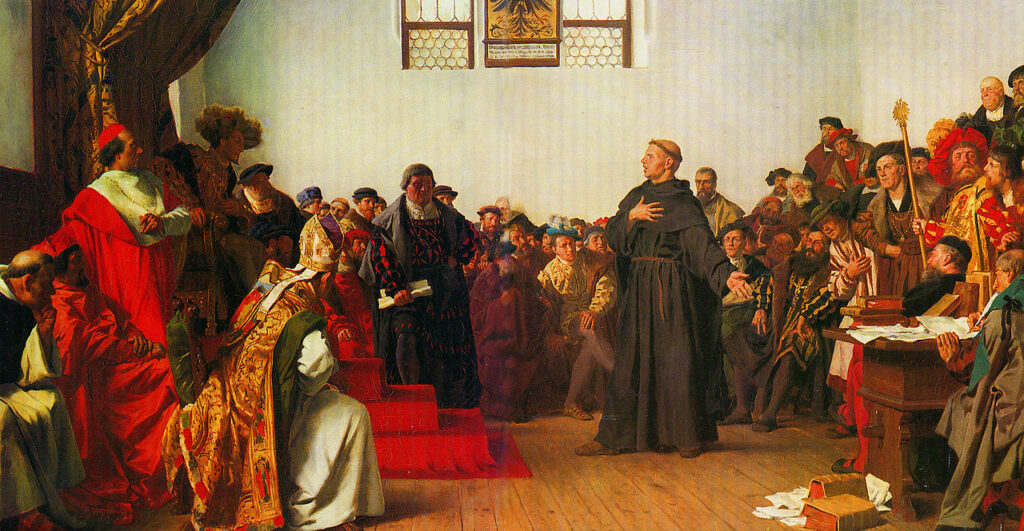

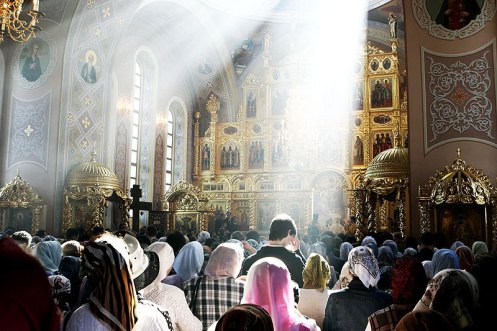
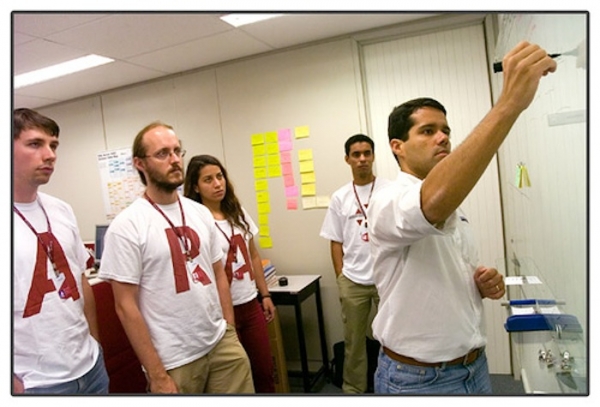
Recent Comments